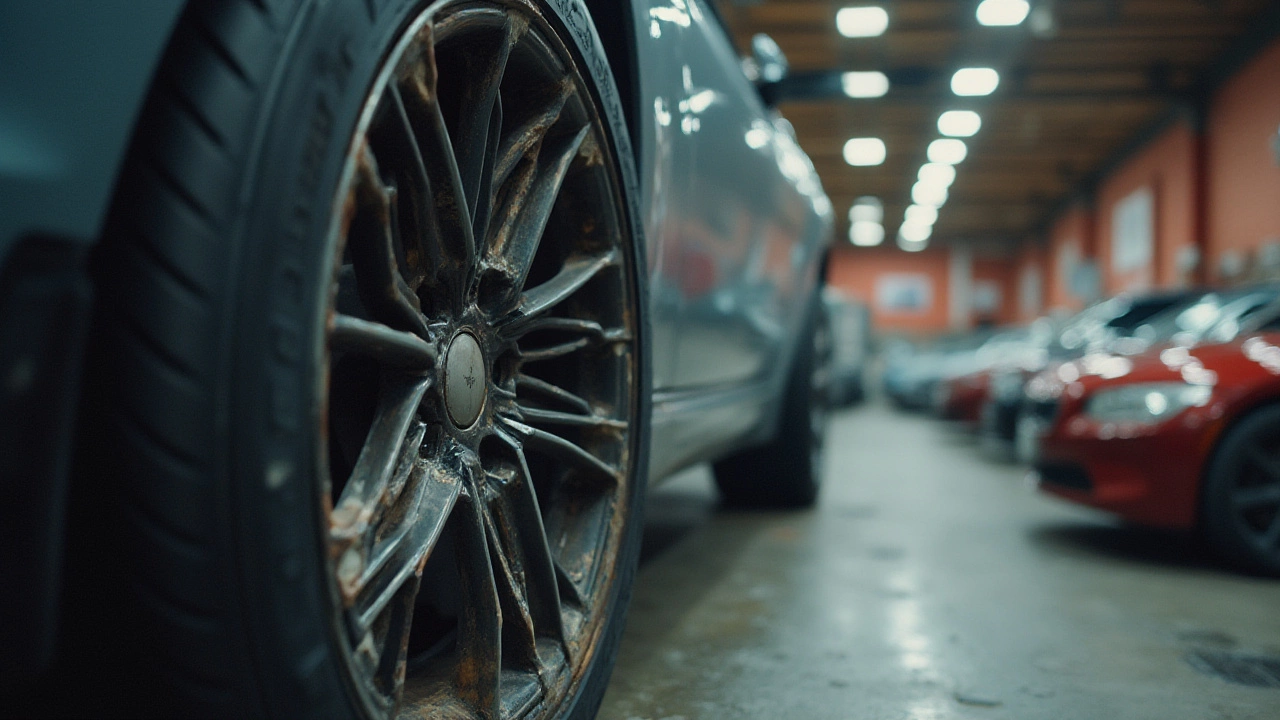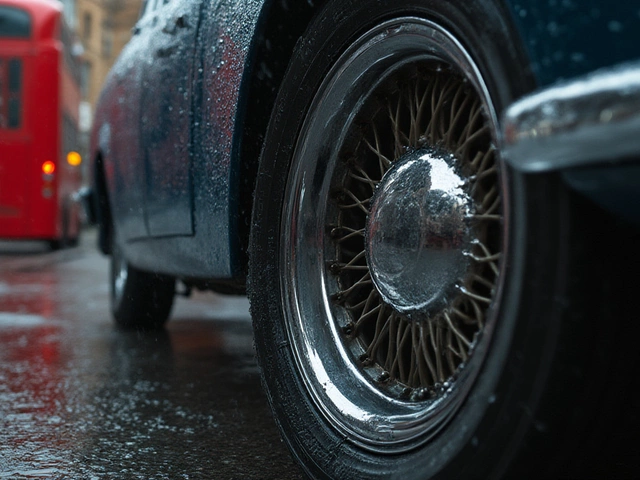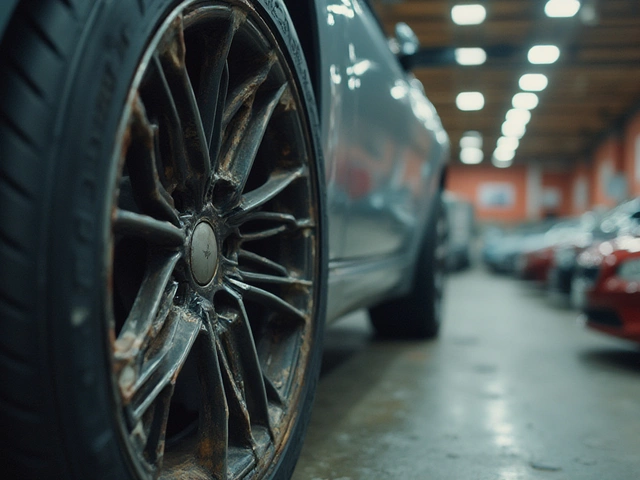Picture this: You just spent a small fortune upgrading your average car wheels to a shiny set of alloy rims. You stand back, take a photo for your mates, and feel a little smug. But before you pop the champagne, let’s get real about what those fancy alloy wheels are actually doing to your wallet and your ride. Sure, they look the business, but under the surface, there’s plenty car owners wish they’d known before swapping out those trusty steel wheels. Some of it might make you think twice next time a slick salesperson tries to talk you into an upgrade.
What Makes Alloy Rims Different?
When you walk through any Melbourne parking lot these days, you’ll see plenty of cars sporting alloy wheels. These rims are made of a blend—usually aluminium mixed with a bit of magnesium, sometimes a sprinkle of nickel or copper. The main draw? They’re lighter and look a thousand times better than those boring steel wheels your old Corolla wore. Alloy rims usually help with performance, steering response, and even fuel efficiency, simply because they weigh less.
But the materials and manufacturing process that make alloy wheels so appealing also make them more susceptible to certain pitfalls. Unlike their steel counterparts, which are like the work boots of the automotive world, alloys are a bit more high-maintenance. They-cuss and fuss if you treat them rough. The fancy look comes at the expense of durability and sometimes even practicality.
Magnesium alloys (a sub-category called "mag wheels") used to be all the rage in the '60s racing scene due to their ultra-low weight. But let’s be honest—mag wheels were notorious for cracking if they got the tiniest knock. These days most consumer alloy wheels are mainly aluminium-based, so they’re better, but still not bulletproof. There’s a reason rally cars still run heavy-duty steel!
So, why the trade-off? Aluminium conducts heat better, which is why your brakes can keep cool under hard stops. But it’s also less forgiving than steel when faced with potholes and rough kerbs. There’s a balancing act manufacturers try to walk, but the more you know about the science behind alloys, the better you’ll understand the hidden down-sides.
The Risks Nobody Tells You About
Most people get seduced by the gloss and forget that alloy rims have weak spots—not just physical, but sometimes in your bank account, too. The number one complaint? They’re prone to damage from potholes, curbs, and debris. Melbourne’s roads after heavy rain are a disaster: one nasty pothole can leave you with a rim so bent you’ll need a replacement or a repair bill that stings for weeks.
This is because the lightweight blend of metals, while great for shaving off kilos and showing off, is just not as tough as steel. According to a survey by Wheels Magazine Australia in 2023, alloy rim failure rates outpaced steel rims by nearly 30 percent in the first three years of car use—mostly due to cracks and bending from road impacts.
Scratches and curb marks show up more obviously on alloys, especially if you’ve gone for a glossy finish or a painted look. These aren’t just cosmetic issues, either. The exposed metal under a scratch is more likely to oxidize. And don’t get me started on corrosion: While aluminium doesn’t rust like steel, road salts and moisture can still eat away at the finish, leading to oxidation that turns a mirror finish into a flaky mess in under four years, especially if you live near the beach.
If you’re a city dweller who loves parallel parking or drives in areas with construction debris, your alloy rims are likely to bear the scars. They’re tough on the ego and tougher on the pocket when you realise many damages can’t just be hammered out.
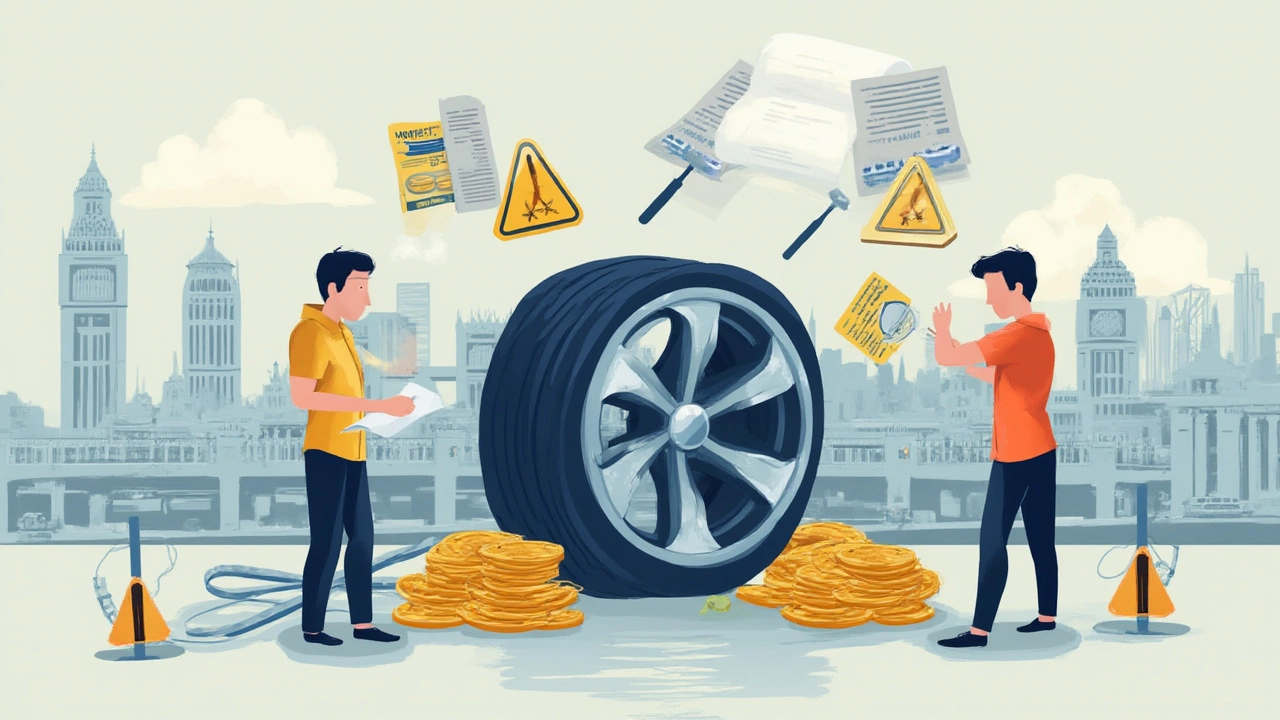
Repair Headaches and Hidden Costs
Here’s a stat that’ll make you wince: repairing a single bent alloy rim costs anywhere from $150 to $350 in Melbourne, according to the RACV’s repair cost index for 2024. Cracked alloys? The bill goes up fast, and many shops won’t even guarantee a safe repair. Unlike steel wheels, which a good mechanic can usually bang back into shape, alloys need specialized treatments or sometimes full-on replacement if the damage is bad enough.
Worse yet, if you went all out for custom wheels or fancy paint jobs, the replacement cost rises sharply. A set of four new factory alloys for a popular model like the Mazda 3 can set you back $2,000 or more—not including fitting or balancing. Aftermarket alloys can vary, but if you chose a rare or imported pattern, sourcing a replacement is a headache. You might even end up replacing a whole set just to keep them matching.
Then there’s the matter of insurance. Many standard car policies here exclude curb or pothole damage for wheels unless you add pricey coverage. If you frequent car parks or areas with speed bumps, extra caution (and cash) is needed.
Want to repaint or refurbish? That’s another common alloy wheel expense. Powder-coating and professional refinishing can mend light scratches, but deep gouges may be totally unfixable. If you love clean, sharp-looking wheels, get ready for the ongoing expense—and reality check when you see the bill.
Everyday Problems That Annoy Drivers
If you’ve ever heard a weird vibration or felt off balance in your steering, don’t dismiss it. Alloys are far more sensitive to balance issues than steel wheels. Hitting even a minor pothole can throw off the alignment, causing wobble at higher speeds. Ignoring it isn’t just annoying—it can mess up your suspension, which leads to even bigger bills down the line.
Alloy rims also tend to leak air at a higher rate when they get older, especially as the finish wears off and tiny imperfections form around the bead. That means more time spent at the servo’s air pump—nobody’s idea of fun on a cold Melbourne morning. And here’s another gripe: tyres with low-profile sidewalls, which are often paired with alloys for a sportier look, are far less forgiving when you run over a sharp stone or chunk of debris. Extra risk, less cushion.
Some owners even find themselves dodging automated car washes because the rotating brushes can scratch up expensive alloys. And if you live in coastal Victoria, the salty air speeds up the oxidation process.
Kids playing around bikes, shopping trolleys scraping the curb, and even careless foot traffic in parking lots pose a daily risk to your wheels. For those who hate driving with a scuffed rim, you’ll spend more time (and money) keeping them looking fresh than enjoying the actual drive.
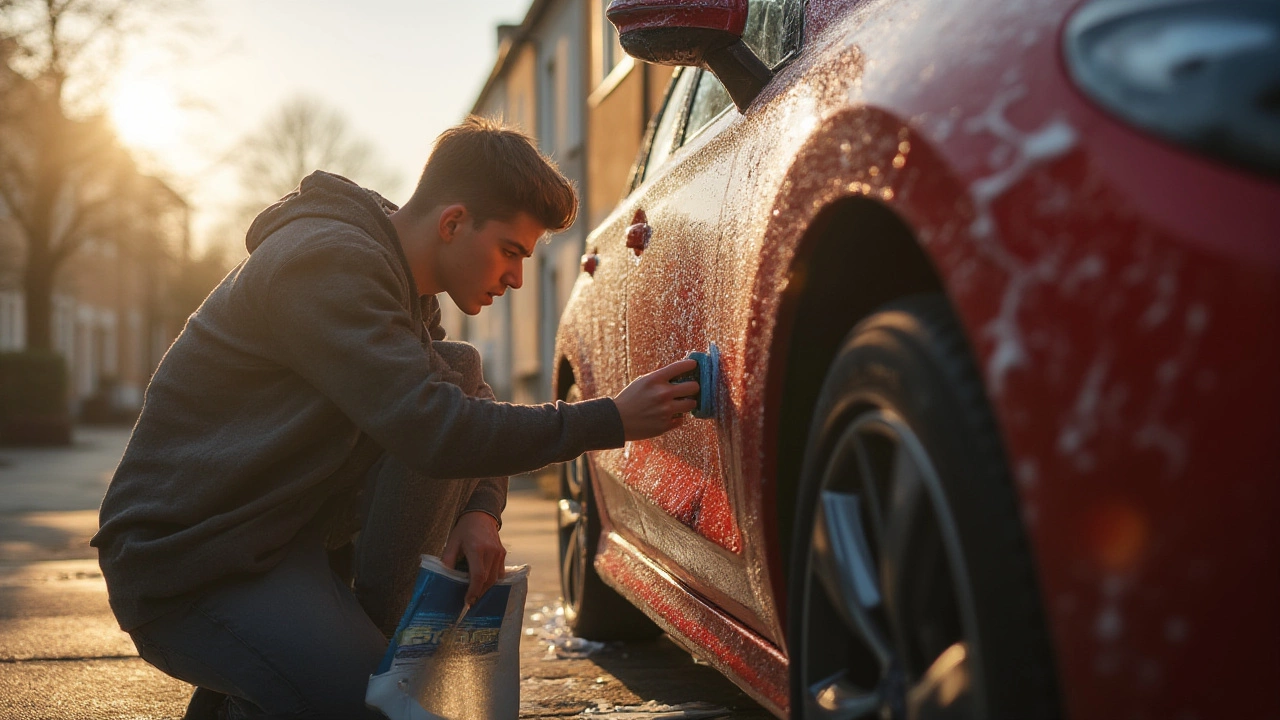
Tips to Minimize the Downside
Before you throw your hands up, there are ways to make alloy wheels work for you. First, stick to reputable brands—avoid knockoffs or ultra-cheap sets you find online. They might look like a bargain, but poor-quality alloys are even more crack-prone and usually lack decent warranties.
Make sure you pick the right size and spec for your car. Going too large or low-profile means your wheels take more hits from potholes. Stick as close as possible to the factory size unless you really know your stuff.
Consider getting wheel protectors—plastic or rubber edge guards can prevent some curb rash. It’s not foolproof, but it helps if you’re prone to close calls. When cleaning, use pH-neutral soap and soft brushes; harsh chemicals damage the protective finish fast. Waxing your alloys three or four times a year creates a barrier against the worst of the elements.
If you regularly hit rough roads or construction zones, swap your alloys for a set of steel wheels in winter. Plenty of Melbourne Uber drivers keep a steel set for the wet months for exactly this reason.
- Regularly check air pressure and inspect for cracks or bends
- Balance your wheels with every tyre change
- Deal with scratches right away to prevent oxidation
- Keep an eye on warranty dates and coverage
- If you hear or feel a wobble after a hit, get it checked fast
Finally—never ignore small damage. Surface scratches left alone become entry points for pitting and corrosion. Jump on minor repairs early, and you’ll delay the bigger hits to your bank account.
| Wheel Type | Average Repair Cost (AUD) | Likelihood of Pothole Damage | Corrosion Risk | Lifespan (Years) |
|---|---|---|---|---|
| Alloy | 200 | High | Medium | 5-8 |
| Steel | 80 | Low | High | 8-12 |
| Forged Alloy | 350 | Medium | Low | 7-12 |
The bottom line? Alloy wheels bring plenty to the table when it comes to looks and handling, but they don’t come without trade-offs. The key is going in with your eyes open—and your tyre iron within easy reach. Your mate at the local garage might love seeing your alloy wheels roll in, but he’s probably hoping they’re not coming back too soon for repairs.

